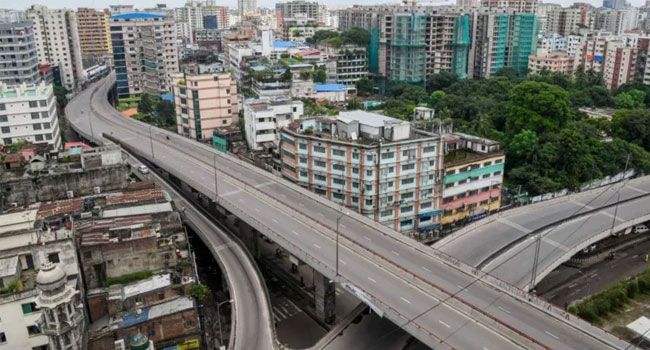According to a research report by the National Bureau of Economic Research (NBER) in the United States, Dhaka, the capital of Bangladesh, is the slowest-moving major city in the world. The list includes other Bangladeshi cities like Chittagong, Mymensingh, Khulna, and Comilla among the top 20 slowest-moving cities globally.
Despite massive investments in various infrastructure projects, such as roads, bridges, metro rail, and elevated expressways, totaling nearly 135 billion dollars since 2012, Dhaka still struggles with traffic congestion. Additionally, the construction of several new flyovers within the city has not significantly eased the overall traffic situation. Long delays and heavy traffic are frequently observed in certain areas of the city.
Experts in transportation and urban planning suggest that the city’s lack of effective public transportation, combined with the rapid growth in the number of vehicles, contributes to the traffic congestion. They argue that there hasn’t been enough focus on implementing skillful transportation planning to keep the city moving efficiently.
Furthermore, the report highlights that even though the travel distances within Dhaka are relatively short, it takes three times longer to travel the same distance in the city compared to other major cities with similar population densities.
The report underscores the need for improved urban planning, efficient public transportation systems, and better traffic management to address the persistent traffic issues in Dhaka. It also points out that urban congestion is a complex issue that requires a multifaceted approach to find effective solutions.
The private research organization CPD (Centre for Policy Dialogue) in Dhaka released a report on Wednesday. In that report, it is stated that Dhaka residents spend 46 minutes on a two-hour journey, resulting in wasted time and work disruptions.
Why Dhaka’s Traffic is Slow According to the Road and Highways Division, nearly one trillion taka has been spent on various communication projects in the past decade.
However, despite this investment, the traffic situation in the city has deteriorated. One way to see this is that in 2007, the average speed of vehicles on Dhaka’s roads was 21 kilometers per hour, which has now dropped to below four decimal eight kilometers per hour.
It is even feared that by 2025, it may fall below four kilometers per hour, according to communication experts.
In other words, the average speed of traffic in Dhaka has decreased by at least 16 kilometers per hour in the last 15 years. Yet, city dwellers have had to endure congestion and inconvenience for nearly eight to ten years, one mega project after another.
Professor Samshul Haque says that a systematic approach to solving traffic congestion has never been considered.
He says, “Check and balance has been lost, and what is being done to solve it is increasing the number of vehicles.”
In May 2015, app-based ride-sharing services were introduced in Bangladesh. The inclusion of motorcycles in ride-sharing has made it even more popular. In the last six years, the number of motorcycles on Dhaka’s roads has increased by nearly 800,000.
According to the Bangladesh Road Transport Authority, in 2010, there were 23,313 buses and minibusses in Dhaka. By the beginning of 2022, this had risen to 47,484.
In other words, the number of all types of vehicles has increased, but there has been no proper planning to manage public transportation relative to the population.
Professor Hadiuzzaman says that new modes of transportation in Dhaka are like wild water. But it is happening without any coordination between supply and demand.
He says, “The economic life of many modes of transportation has come to an end. They are creating chaos on the road. But no one is paying attention to this. Instead, everyone is busy with big projects.”
During this time, multiple routes of Dhaka’s Metro Rail have started or are ongoing as projects. However, it is not certain whether the Uttara-Motijheel route of the metro rail will be fully operational before next June.
The route from Agargaon to Motijheel will be launched in October without several stations.
Samshul Haque, however, says that elite projects add short-term value, but they do not benefit in solving traffic congestion in the long run.
He says that without coordination between BRTA, RAJUK, and city corporations, it will be impossible to improve the speed of the city’s transportation.
It should be noted that the Comprehensive Transport Plan (CTP) for Dhaka, approved by the government in 2005, had set a deadline for implementation until 2025. This plan, along with various research and reviews, provided recommendations for franchising bus routes or providing bus operations through special methods.
Although franchising arrangements have been started on three routes after 17 years, questions have arisen about their effectiveness. According to BRTA, work is underway to move Gabtoli Terminal to Hemayetpur and Sayedabad Terminal to Madanpur, keeping in mind the need to relieve congestion in the city.
But even with these changes, no one knows what role they will play in solving traffic congestion in the city.

